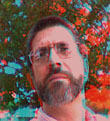|
|
This topic comprises 2 pages: 1 2
|
|
Author
|
Topic: My First Time (watching a DLP presentation)
|
|
|
|
|
|
|
|
|
|
|
|
|
|
|
Richard Topping
Film Handler
Posts: 13
From: Newcastle-upon-Tyne, UK
Registered: May 2001
|
 posted 03-24-2002 07:41 AM
posted 03-24-2002 07:41 AM





I think that the presentation you must have seen must have been set up poorly from the installation. I have just been setting up a cinema in Hungary and a DLP was installed in their. Kinoton Console and Barco Head.The first film playing was Monsters Inc. (in english though!) and the picture was almost perfect, everything looked very good and was only when you got close up could you notice the pixels. It is still not up to standard of 35/70mm but it is getting closer! I was speaking to the rep. from technicolour who set up the film, and some interesting facts (if you did'nt know them already) There are 3 DLP chips in the head, each chip contains 1.2 million mirrors, and like said before they are in state 0 or state 1 (open or closed) differant light scales are acheieved by turning from state 0 to 1 and back again quickly. The mirrors are moved by electic pulses sent by the QBit (the bit that runs the film). Hence 3.6 million mirrors = 3.6 million pixels. For every 1000 chips made only 1 have every single mirror working and therefore can be used in a DLP cinema projector. The other 999 have at least one pixel missing.
| IP: Logged
|
|
|
|
|
|
|
|
|
|
|
|
|
|
John Pytlak
Film God

Posts: 9987
From: Rochester, NY 14650-1922
Registered: Jan 2000
|
 posted 03-26-2002 08:37 AM
posted 03-26-2002 08:37 AM





Paul said: "The first DLP persentation I saw was at ShoWest, the screening of "Windtalkers". The sound was awesome, but I was not impressed with the picture. Something seemed to be missing. I think I would rather see that movie on 35mm."I saw the "Windtalkers" digital cinema presentation as well. I was very disappointed in the handling of the highlights --- very light areas of the scene (sunlit rocks, the highlights on Nicholas Cage's nose) tended to "clip" in a video-like fashion. The black areas were not truly black --- e.g., the night scene where the drunken Cage is in the graveyard had a "foggy" appearance. Sitting in the front row of the crowded Les Theatre des Arts, I could also see the pixel structure in light areas, and "jaggies" in the titles.
------------------
John P. Pytlak, Senior Technical Specialist
Worldwide Technical Services, Entertainment Imaging
Research Labs, Building 69, Room 7525A
Rochester, New York, 14650-1922 USA
Tel: +1 585 477 5325 Cell: +1 585 781 4036 Fax: +1 585 722 7243
E-Mail: john.pytlak@kodak.com
Web site: http://www.kodak.com/go/motion
| IP: Logged
|
|
|
|
All times are Central (GMT -6:00)
|
This topic comprises 2 pages: 1 2
|
Powered by Infopop Corporation
UBB.classicTM
6.3.1.2
The Film-Tech Forums are designed for various members related to the cinema industry to express their opinions, viewpoints and testimonials on various products, services and events based upon speculation, personal knowledge and factual information through use, therefore all views represented here allow no liability upon the publishers of this web site and the owners of said views assume no liability for any ill will resulting from these postings. The posts made here are for educational as well as entertainment purposes and as such anyone viewing this portion of the website must accept these views as statements of the author of that opinion
and agrees to release the authors from any and all liability.
|

 Home
Home
 Products
Products
 Store
Store
 Forum
Forum
 Warehouse
Warehouse
 Contact Us
Contact Us




 Printer-friendly view of this topic
Printer-friendly view of this topic




















